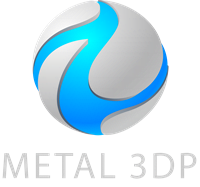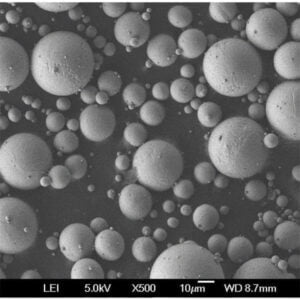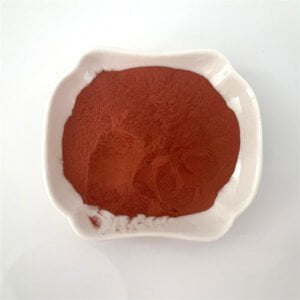Stel je voor dat je laag voor laag complexe metalen voorwerpen maakt, met ongeëvenaarde precisie en de mogelijkheid om zelfs de meest uitdagende materialen te verwerken. Dat is de magie van Selective Electron Beam Melting (SEBM), a revolutionary 3D printing technology that’s transforming the way we design and manufacture metal components.
What is selective electron beam melting?
selective electron beam melting falls under the umbrella of Additive Manufacturing (AM), also known as 3D printing. It’s a powder-bed fusion technique where a high-powered electron beam selectively melts metal powder particles to create a 3D object, one layer at a time. This all happens within a high-vacuum chamber, preventing oxidation and ensuring a clean, high-quality build.
How selective electron beam melting Werken
Think of SEBM as a microscopic sculptor wielding an electron beam as its chisel. Here’s a breakdown of the process:
- Preparation: A 3D model is sliced into thin layers, forming the digital blueprint for the object. The build chamber is filled with a fine layer of metallic powder specific to the desired final product.
- Electron Beam Action: A focused electron beam, generated by an electron gun, scans across the powder bed according to the sliced model data. The high energy of the beam melts the targeted powder particles, fusing them together to form the first layer of the object.
- Laag voor laag: The build platform lowers slightly, and a fresh layer of powder is deposited across the previous layer. The electron beam then scans again, selectively melting the new powder particles and bonding them to the existing structure. This process repeats meticulously, building the object layer by layer until it’s complete.
- Cooling and Removal: Once the build is finished, the chamber cools down, and the final object is carefully removed from the surrounding powder. Depending on the design, some post-processing steps like support removal and surface finishing might be necessary.

Common Metal Powders for SEBM
| Metaalpoeder | Beschrijving | Eigenschappen | Toepassingen |
|---|---|---|---|
| Titanium Alloys (Ti-6Al-4V, Ti-6Al-7Nb) | The workhorses of SEBM, offering excellent strength-to-weight ratio, biocompatibility, and high corrosion resistance. | Strong, lightweight, biocompatible, corrosion-resistant | Ruimtevaartonderdelen, biomedische implantaten, tandprotheses |
| Roestvrij staal (316L, 17-4PH) | Versatile and widely used, known for their excellent mechanical properties and corrosion resistance. | Strong, ductile, corrosion-resistant | Medical instruments, fluid handling components, automotive parts |
| Inconel (IN625, 718) | Superalloys known for their exceptional strength and resistance to high temperatures and harsh environments. | Hoge temperatuursterkte, oxidatieweerstand | Turbineschoepen, onderdelen van raketmotoren, warmtewisselaars |
| Nickel Alloys (Monel 400, Hastelloy C-276) | Offer superior corrosion resistance and perform well in challenging chemical environments. | Corrosion-resistant, wear-resistant | Chemical processing equipment, valves, pumps |
| Aluminiumlegeringen (AlSi10Mg, AlSi7Mg0.3) | Lightweight and offer good strength and machinability. | Lightweight, strong, machinable | Aerospace components, heat sinks, automotive parts (limited use due to higher cost compared to traditional methods) |
| Kobaltchroom (CoCrMo) | Biocompatible and wear-resistant, a popular choice for medical implants. | Biocompatibel, slijtvast | Heup- en knieprothesen, tandheelkundige implantaten |
| Copper Alloys (CuNi18Zn5Al, CuCr1Zr) | Offer high thermal and electrical conductivity, making them ideal for heat exchangers and electrical components. | High thermal conductivity, high electrical conductivity | Heat sinks, electrical connectors, brazing materials |
| Gereedschapsstaal (H13, AISI M2) | Known for their high hardness and wear resistance, perfect for tooling applications. | Hard, wear-resistant | Snijgereedschappen, matrijzen, mallen |
| Edele metalen (goud, zilver, platina) | High value and unique properties, used for specialized applications in jewelry, electronics, and aerospace. | High value, good electrical conductivity, biocompatible (for specific alloys) | Jewelry, electrical contacts, biomedical applications (limited) |
| Vuurvaste metalen (tantaal, wolfraam) | Offer extremely high melting points and are ideal for high-temperature applications. | High melting point, high strength at |
Voordelen van Selective Electron Beam Melting
SEBM boasts a range of advantages that make it a compelling choice for various metal 3D printing applications. Let’s delve into some of its key benefits:
- Ongeëvenaarde ontwerpvrijheid: SEBM allows for the creation of highly complex geometries with intricate features and internal channels, which would be near impossible or incredibly expensive to achieve with traditional manufacturing methods. This opens doors for innovative and lightweight designs that push the boundaries of functionality.
- Uitzonderlijke materiaaleigenschappen: The high-vacuum environment and precise melting process in SEBM lead to parts with excellent mechanical properties, including high strength, good ductility, and outstanding fatigue resistance. These properties are often comparable or even superior to those achieved through traditional techniques like casting or forging.
- Superior Accuracy and Precision: The electron beam in SEBM offers exceptional control and precision, resulting in parts with tight tolerances and smooth surface finishes. This reduces the need for extensive post-processing and minimizes material waste.
- Materiaalefficiëntie: SEBM utilizes a powder-bed approach, meaning unused powder can be recovered and reused for subsequent builds. This minimizes material waste and offers a more sustainable production method compared to traditional subtractive manufacturing techniques.
- Kortere doorlooptijden: SEBM allows for the rapid prototyping and production of complex metal parts, eliminating the need for complex tooling and lengthy fabrication processes. This can significantly reduce lead times and accelerate product development cycles.
- Freedom of Material Choice: SEBM offers a wider range of compatible metal powders compared to other metal 3D printing technologies. This allows for the creation of parts from a diverse selection of materials with unique properties, catering to specific application demands.
Disadvantages of Selective Electron Beam Melting
While SEBM offers a plethora of advantages, it’s not without its limitations. Here’s a look at some of the drawbacks to consider:
- Hoge kosten: SEBM machines and the associated materials tend to be expensive compared to traditional manufacturing methods. This can be a barrier for entry for smaller companies or those with limited budgets.
- Beperkingen in bouwgrootte: Current SEBM machines have limitations on build volume, restricting the size of parts that can be produced. However, advancements are continuously expanding these capabilities.
- Oppervlakteruwheid: While SEBM offers good surface finishes, they might not be as smooth as those achievable with some traditional machining techniques. Additional post-processing steps might be needed for applications requiring a highly polished surface finish.
- Ondersteunende structuren: Similar to other 3D printing technologies, SEBM often requires the use of support structures for overhanging features. These supports need to be removed after the build, which can be a time-consuming and potentially delicate process.
- Beperkte kleuropties: Unlike some other 3D printing technologies, SEBM is primarily focused on functional applications and doesn’t offer a wide range of color options for the finished parts.
Toepassingen van Selective Electron Beam Melting
SEBM’s unique capabilities make it a valuable tool for various industries. Here are some prominent applications:
- Lucht- en ruimtevaart: The lightweight and high-strength properties of SEBM-produced parts make them ideal for aerospace applications. Components like landing gear parts, missile fins, and lightweight brackets can be created with intricate designs to optimize performance and weight reduction.
- Medische hulpmiddelen: The biocompatibility of certain metal powders, coupled with the precision of SEBM, allows for the creation of customized medical implants, such as hip and knee replacements, dental prosthetics, and cranial implants. These implants offer excellent biocompatibility and can be tailored to individual patient needs.
- Automobiel: SEBM is increasingly used in the automotive industry to produce high-performance components like lightweight pistons, complex cooling channels in engine blocks, and custom gears and shafts. This allows for weight reduction, improved efficiency, and enhanced performance.
- Energiesector: SEBM is used to create highly resistant components for turbine blades and heat exchangers used in power generation due to the ability to utilize high-temperature alloys with excellent mechanical properties.
- Gereedschap: SEBM can produce complex cutting tools and dies with intricate geometries and high wear resistance. This allows for the creation of specialized tooling for specific applications and reduces production lead times.
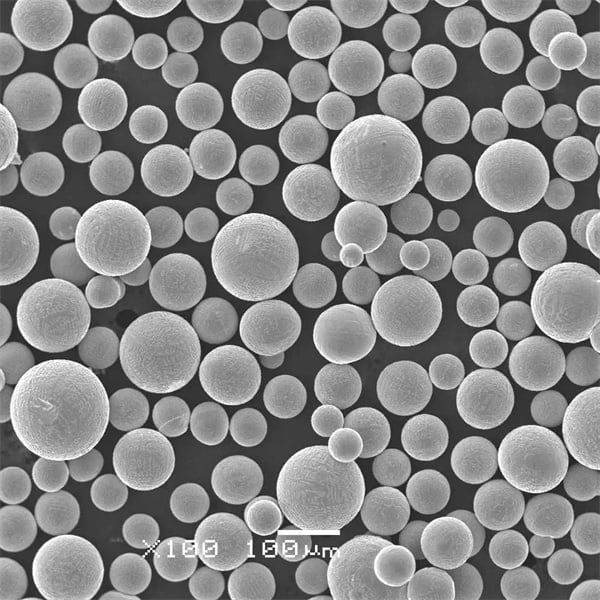
SEBM Metal Powders
We’ve explored the common metal powders used in SEBM, but let’s delve a bit deeper into some key factors to consider when choosing the right powder for your specific application:
- Deeltjesgrootte en -verdeling: The size and distribution of the powder particles significantly impact the final properties of the printed part. Finer powders generally result in smoother surface finishes but can be more challenging to work with due to flowability issues. Conversely, coarser powders offer better flowability but might lead to a rougher surface finish.
- Poeder Zuiverheid: The purity of the metal powder directly affects the mechanical properties of the finished part. Impurities can weaken the material and lead to cracks or other defects. High-purity powders are essential for critical applications requiring optimal performance.
- Sphericity and Flowability: Ideally, metal powders for SEBM should be spherical in shape to ensure good flowability within the build chamber. Good flowability allows for even powder distribution and consistent melting during the build process.
- Chemische samenstelling: The specific chemical composition of the powder determines the final properties of the printed part. Consider factors like alloying elements, trace elements, and oxygen content when selecting a powder for your desired application.
Here’s a table summarizing some key considerations for SEBM metal powders:
| Factor | Beschrijving | Invloed |
|---|---|---|
| Deeltjesgrootte en -verdeling | The size and spread of powder particles. | Affects surface finish, density, and mechanical properties. |
| Poederzuiverheid | The absence of impurities in the metal powder. | Influences mechanical strength and reduces the risk of defects. |
| Sphericity and Flowability | The roundness and ease with which powder flows. | Impacts layer quality, density, and overall build success. |
| Chemische samenstelling | The specific elements and their proportions within the powder. | Determines final material properties like strength, corrosion resistance, and high-temperature performance. |
Specifications, Sizes, Grades, and Standards for SEBM Metal Powders
Metal powders for SEBM adhere to specific industry standards to ensure consistent quality and printability. Here’s an overview of some key aspects:
- ASTM International (ASTM): ASTM publishes various standards for metal powders used in additive manufacturing, including ASTM F3049 for metal powders for AM and ASTM B294 for titanium and titanium alloy powders.
- Materiaalgegevensbladen (MDS): Metal powder suppliers typically provide Material Data Sheets (MDS) that detail the specific properties and characteristics of their powders, such as chemical composition, particle size distribution, apparent density, and flowability.
- Poederkwaliteiten: Metal powders for SEBM are available in various grades depending on the application requirements. Higher purity grades might be necessary for critical applications demanding exceptional mechanical properties.
- Powder Size Availability: The size of metal powders for SEBM typically ranges from 15 to 150 microns. The specific size chosen depends on the desired surface finish, packing density, and mechanical properties of the final part.
Suppliers and Pricing of SEBM Metal Powders
The availability and pricing of SEBM metal powders can vary depending on the specific material, powder grade, and order quantity. Here’s a general breakdown:
- Metaalpoeder leveranciers: Several companies specialize in supplying metal powders for additive manufacturing, including Höganäs AB, AP Powder Company, AMPO LLC, LPW Technology, and Sandvik Hyperion.
- Prijzen: The cost of metal powders for SEBM can range from $50 to $500 per kilogram depending on the material, powder grade, and supplier. Generally, higher purity powders and exotic materials command a premium price.
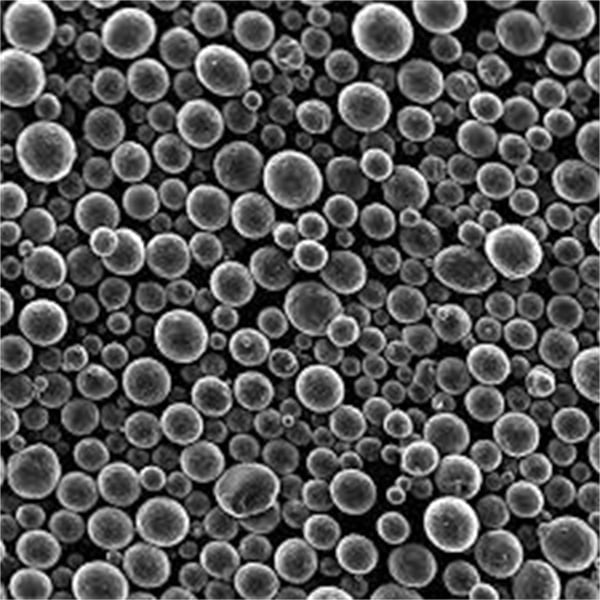
FAQ
Here are some frequently asked questions (FAQ) about Selective Electron Beam Melting (SEBM):
| Vraag | Antwoord |
|---|---|
| What are the benefits of SEBM over other metal 3D printing technologies? | SEBM offers superior design freedom, exceptional material properties, high accuracy and precision, material efficiency, and freedom of material choice compared to some other metal 3D printing methods. |
| What are the limitations of SEBM? | SEBM can be expensive due to machine and material costs, has limitations on build size, might require additional post-processing for surface finishes, needs support structures for some designs, and offers limited color options. |
| What industries use SEBM? | SEBM is used in various industries, including aerospace, medical devices, automotive, energy, and tooling. |
| What are some common metal powders used in SEBM? | Common metal powders for SEBM include titanium alloys, stainless steel, Inconel, nickel alloys, aluminum alloys, cobalt |
